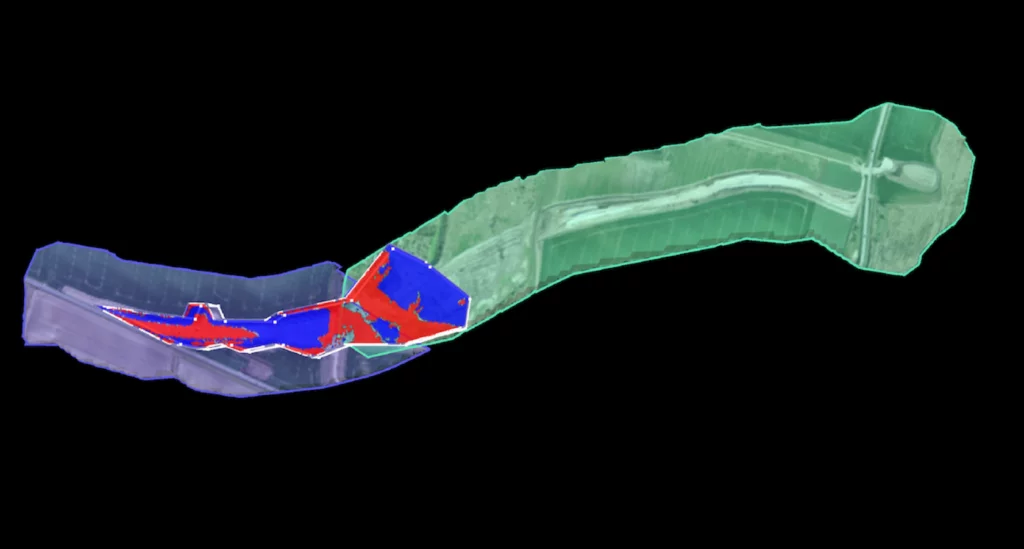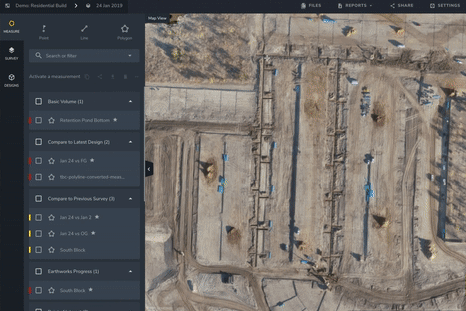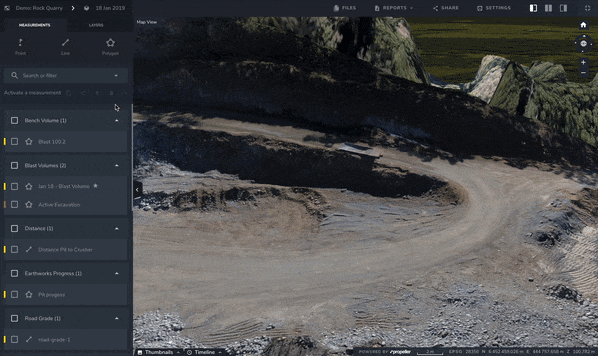Seven Road Design Tools to Lighten Your Load
Road design and planning is a juggling act. You’re balancing job requirements and physical limitations, while keeping all other site operations moving forward at the same time.
Today, we’ll highlight some Propeller tools that make the highway design process a whole lot easier.
Whether you’re planning a highway redevelopment job or building out a completely new road design, earth movement is inevitable. You’re going to move dirt from one spot to another to fix the grade, and establish stable base layers to support the finished surface.
Cutting, excavating, and clearing can all be done much faster with the help of intuitive software that makes progress tracking a breeze.
At Propeller, we’ve made it our mission to design and build tools that allow you to spend less time learning the latest software, and more time doing the work that matters most.
Did you know?
Drone photogrammetry brings value to 80% of the road design workflow: tracking progress, measuring stockpile quantities, and performing QA throughout subgrade development.
Here are seven road design tools that are sure to make your next project run like clockwork.
DXF Uploads

Your original design is arguably the most essential piece of the roadwork puzzle. It’s the beacon that guides you back if development goes astray. It’s also how we understand how far we’ve come—and how far we have left to go.
Propeller customers upload their DXF files to keep them in check at every stage of road design. As they flatten, cut, and add material, they pull up the DXF and lay it over their most recent flyover to make observations about progress.
When you’re working on a road that’s 15 miles long, you’re only ever interacting with a small section, making it easy to lose sight of the big picture. (Unless you’re using our Composite Survey feature—but more on that below.)
What you see in Propeller is quite literally the big picture—and it’s available whenever you need it. Blanket DXF files over your terrain to experience the finished grade in 3D, or inspect your design from a bird’s-eye view and with your exact elevation to prevent tunnel-vision.Click here for a full list of accepted design files—now including LandXML.
Linework

We understand the limitations of photogrammetry during the paving process. You need a level of accuracy greater than 1/10 ft when you’re laying asphalt, and drones aren’t quite there yet.
Most drivers don’t spare a thought for how to design a road—but actually, the hardest part of a road job happens pre-paving.
More accurate and frequent information about how the subgrade is progressing keeps your team informed, your client happy, and regulations met.
Not only can you upload all your design files to Propeller—you can also add additional linework over your survey images. Having a wireframe prevents arbitrary, one-off measurements and introduces a shared context, keeping everyone on the same page about where certain boundaries lie.
Most customers add linework every 10–20 meters so they can reference one particular section. That way, everyone can refer to the same section. There are also many useful boundaries outside of that use case—center lines, alignment markings, curvature, etc.—all items you can communicate through linework. The image above shows how linework appears in the Propeller Platform, layered over a customer’s most recent survey imagery.
Cross-Section Comparisons

Viewing your site in 3D adds a layer of tangibility to an end goal that had previously only existed in design documents—but it doesn’t do anything to quantify progress made. (At least, not on its own.)
That’s where cross-section comparisons come in. As the illustration shows, users simply take the cross-section tool, drag it across the section of the road they’d like to examine, and presto! The Platform generates a grade spectrum, which is where you get accurate metrics on how far you are from design.
Once you know your delta, you can go back through and revise, bringing in more dirt or taking some away—whatever’s necessary to bring the grade up to design level.
For quick, easy calculations, all linework converts to a measurement with just a few clicks. When you’re ready to export your measurements, scroll through and check off the ones you want to report on. The Platform then generates a comprehensive progress report to share with everyone who needs it.
And reports are as specific as you need them to be. Since linework compartmentalizes your project into subsections, you can easily compare one section to another with the click of a button.
Composite Surveys

Composite Surveys are essentially automated image stitching—a way to combine the most recent 3D survey images from small, active sections of a roadwork site into a meaningful whole. It’s the best way to get the full-site picture you need to make the right decisions for the project as a whole, without spending hours (or even days) re-surveying inactive sections or manually processing cumbersome datasets.
Road design projects are a common stumbling block for customers. Using traditional survey methods, the time sink makes regular surveying impossible.
With composite surveys, just upload and merge smaller sections to combine up to 25 surveys—as they change—into one seamless model of the entire site, no matter how large.
You can still measure and track progress against previous survey data and final grade across the entire site. Calculate material volumes, measure distance, visualize against design, and document progress with just a few clicks.
Line Markers to Polyline

Propeller allows you to easily convert line markers to polylines so that the road design wireframe is more visually cohesive and easier to interpret. From there, you can add specific, polyline-based measurements to your arsenal.
Once you have a set of measurements that help you do your job more efficiently, you can save those measurements and copy them onto each new data set. This way, all of your data remains up-to-date with your most recent flyover.
Cut/Fill

No piece of land is road-ready. Maybe you were commissioned to wind a road up a mountainside that hasn’t been prepped for development. In that case, for most of the job, you’re blasting, excavating, and finding a way to make that land secure enough for civil traffic.
Rather than leaving cut and fill measurements to guesswork, we offer an easy way to find out exactly how much dirt you need to fill a particular area or adjust a grade.
All cut/fill measurements are exportable, so if you’re in the field without connectivity, you have them with you. Check out this article for more information on cut and fill calculations.
Haul Road Analysis

If you had to choose one road design tool that’s different from the rest of the bunch, it’d be this one.
Haul road analysis comes into play when you’re hauling heavy loads in and out all day long—gravel, stone, waste, what have you—or if you’re frequently driving heavy equipment across a site.
All of that traffic compiles into a hefty outbound fuel cost—and most earthwork operations are interested in cutting back.
Using haul road analysis, road design worksites of all kinds monitor slope to maximize fuel efficiency.
The Photogrammetry Misconception in Road Design
With road jobs, photogrammetry is your insurance policy—a hard, transparent record of each project phase to make sure everyone’s doing the right things.
Propeller offers a way to track progress down to 1/10 ft and quickly make quantifiable observations about your material movement. These quantities keep your project moving and on-schedule, all the way up until paving.
With 3D visuals of your site, you’re managing everything up until subgrade the way you’ve always wished you could—with quick quantities to share with all the right people.
Curious about other ways contractors are using Propeller for road development and highway design? Give this article a try. You’ll find the benefits extend beyond these seven tools.





